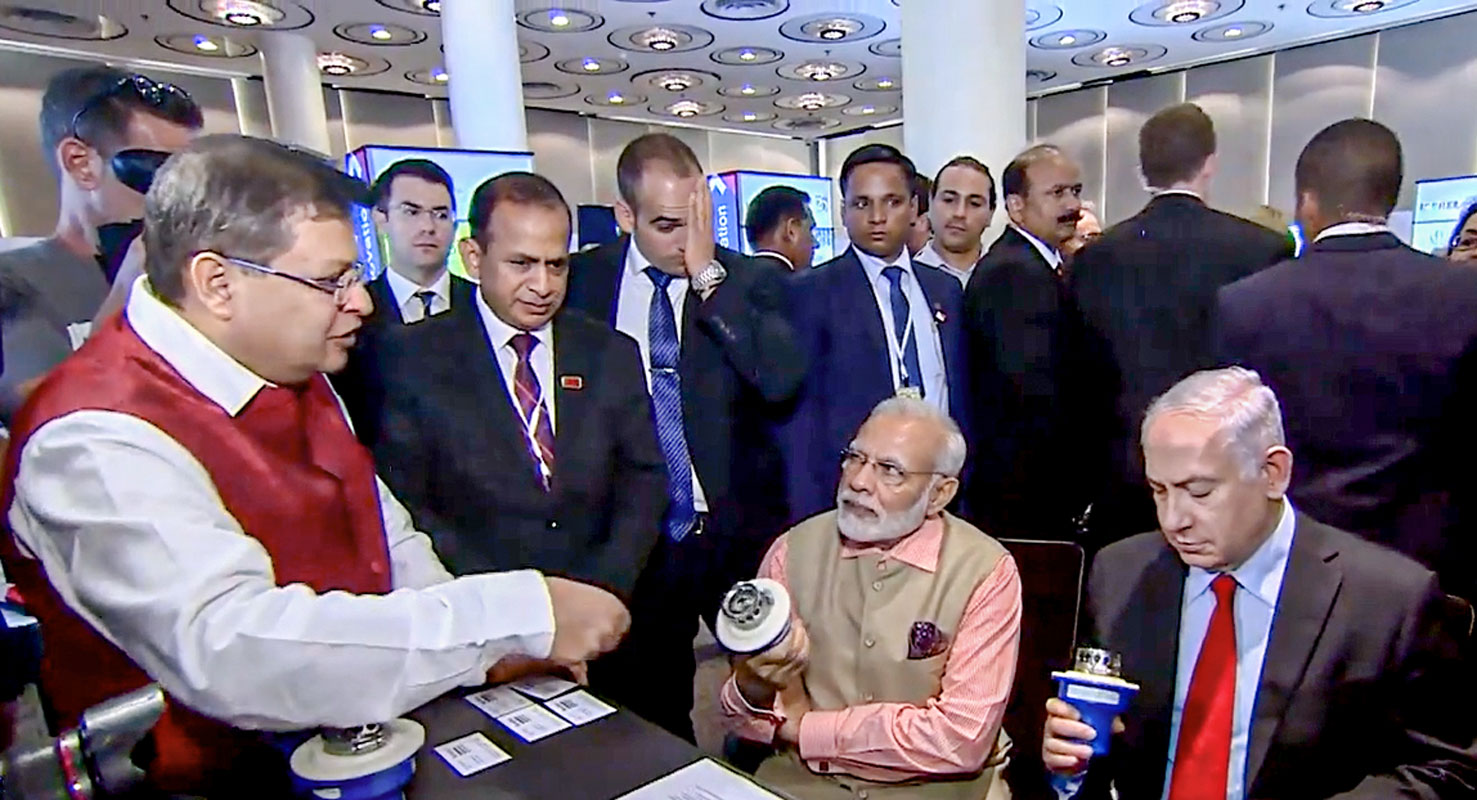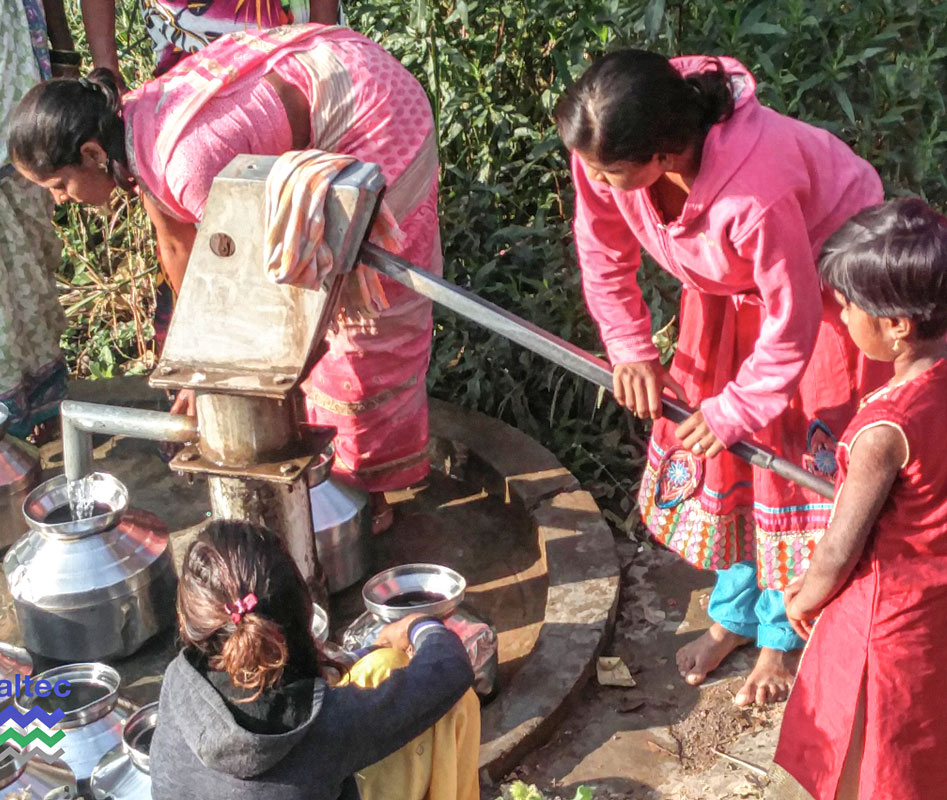
You could call it his Eureka moment. Marine engineer Anjan Mukherjee was reading an article in Nature magazine on the technique used by the snapping shrimp (Alpheidae) to harness energy to attack its prey, when the thought struck him that the same method could be employed to purify water and rid it of microbes. At that time little did he know that from his inspired thoughts would evolve a technology with the potential to rid the world of waterborne diseases.
This was way back in 2001 when Mukherjee, then in the merchant navy, was trying to get his head around a solution to purify the water carried in the ballast tanks of vessels to stabilise the empty ship till it was loaded with fresh cargo. Before loading, the ballast tanks were emptied, and the untreated water discharged into the sea which could be detrimental to the ecosystem. “When I chanced to read the article, I was waiting in the office of a senior scientist I had gone to see about the discharge water issue. It suddenly struck me that biomimicry of the snapping shrimp may be a way forward. The scientist put me across to the right people to work out the solution,” recalls Mukherjee.
In 2021, the Maji Reactor was selected as a permanent exhibit in the New Technologies of the Future gallery at the Deutsches Museum, Nuremberg, Germany.
In 2016 when Mukherjee, who travelled extensively across the world, accidently visited a diarrhoea-hit village in India, his attention was suddenly drawn to the fact that every year thousands of children die in India due to sanitation-related diarrhoeal diseases because of consumption of unsafe water. Also, that contaminated water transmits not just diarrhoea, but cholera and typhoid as well. Further research revealed that in the country’s 650,000 villages, 85 per cent of water is drawn using borewells through pipes and hand pumps. These tap into the groundwater or aquifers, which are widely contaminated with disease-causing germs and pollutants. Hand pumps that serve a large population usually deliver water unfit to drink. Also, of the 11 million hand pumps in India only eight million are in working order.
Taking the most commonly used hand pump, India’s Mark II model, Mukherjee developed a device in 2017 on the same snapping shrimp scientific principle. The device could be fitted to the pump in less than 30 minutes by even a person who did not have any technical skills. He patented his invention, the Maji Reactor evoking the concept of ‘Ma’— the mother, the nurturer. Interestingly, in Africa, where the reactor may soon be introduced, Maji means water in the Swahili and Afrikaans language.
So, how does the invention work? Mukherjee explains, “In the case of the snapping shrimp, it attacks its prey by shooting a jet of water at 60mph by snapping its claw. This creates a low pressure ‘bubble’ in its wake. When the bubble collapses, it makes a bang louder than a rocket launch or jet engine. For a tiny fraction of a second, temperatures in the bubble soar to more than 4,426 degrees C (8,000 degrees F), essentially destroying its prey. The popping also creates a flash of light for a billionth of a second.
“Similar to the snapping shrimp, the Maji Reactor device converts kinetic energy of the fluid into millions of targeted microbubbles each acting as a localised reactor. These bubbles release a large amount of intense energy during their collapse. The resultant shock waves physically kill microbes and deliver water to those drawing it over 99 per cent safer than before.” Incidentally, the device works by reacting to the strokes of the human hand on the hand pump while he or she withdraws water.
Soon Mukherjee launched his company Taraltec Solutions to enter the market with his invention. However, to manufacture the device, the marine engineer finds the third-party manufacturing route for small parts the best, with him putting all the parts together. “This is cutting edge work and I go to the best talent available,” he says.

The Maji Reactor has given Mukherjee huge traction. He has won several awards including in 2017 the Indian Innovation Growth Programme Award 2.0 organised by the Department of Science and Technology, Lockheed Martin and Tata Trusts; in 2019 the Best Innovation Award from the Ministry of Rural Development and Panchayati Raj; in 2020 he was the Winner of Sustainability, Maharashtra Start-up Week; and in the same year he won the National Start-up Award (Water and Water Network).
In 2021, the Maji Reactor was selected as a permanent exhibit in the New Technologies of the Future gallery at the Deutsches Museum, Nuremberg, Germany. Mukherjee has no idea how that happened. The museum, obviously looking for innovations that had great potential, found his to be an appropriate exhibit.
Despite all these recognitions, Mukherjee is a pioneer who claims to be no businessman out to make huge profits. He wants his invention to benefit humanity to the maximum. As the founder of a pure science bootstrapped company providing a social impact service, he is always on the lookout for companies which will use the Corporate Social Responsibility (CSR) route to provide more Maji Reactors to the rural population. Companies such as Reliance, Godrej, Jubilant, Lupin, and organisations such as Tata Trusts, Water Aid and Nalanda Foundation have already chosen Taraltec for providing the Maji Reactor as part of their CSR activity. It is presently dispensing safe water in pockets of Maharashtra, Bihar, Odisha, Uttar Pradesh and West Bengal.
“We have impacted close to a million people through CSR funding,” says Mukherjee, who is looking for more organisations that recognise the potential of the device and take forward the work of installing it in every village where the water is not potable and safe.
The Ministry of Panchayati Raj has also written to all states that the Central Finance Commissions’ grants can be utilised for this purpose. With the device providing good results during trials, the marine engineer hopes that his device will be used across the country and the world to eradicate waterborne diseases.







